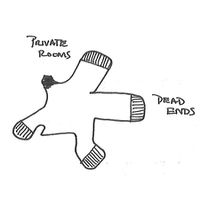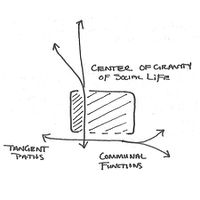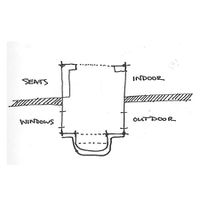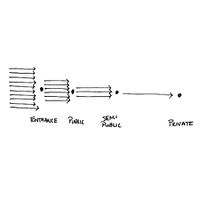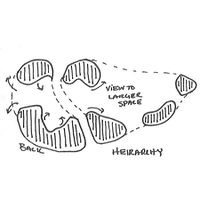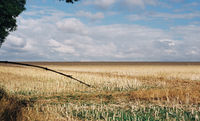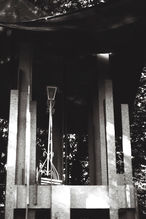atom11:Intimacy
| Line 60: | Line 60: | ||
'''"Now I am traversed by bridle paths, under the seal of sun and shade...I live in great density...Shelter lures me. I slump down into the thick foliage...In the forest, I am my entire self. Everything is possible in my heart just as it is in the hiding places in ravines. Thickly wooded distance separates me from moral codes and cities."''' (Bachelard quoting Menard in ''The Poetics of Space'', 187) | '''"Now I am traversed by bridle paths, under the seal of sun and shade...I live in great density...Shelter lures me. I slump down into the thick foliage...In the forest, I am my entire self. Everything is possible in my heart just as it is in the hiding places in ravines. Thickly wooded distance separates me from moral codes and cities."''' (Bachelard quoting Menard in ''The Poetics of Space'', 187) | ||
| − | ==== | + | ====Phenomenological Intimacy==== |
Christian Norberg Schulz " Genius Loci Towards a Phenomenology Architecture" | Christian Norberg Schulz " Genius Loci Towards a Phenomenology Architecture" | ||
Revision as of 11:45, 29 September 2011
Contents |
Intimacy
in·ti·ma·cy
- the state of being intimate: familiarity
- something of a personal or private nature
synonyms: belonging, closeness, inseparability, familiarity, nearness
Conditions of Intimacy
Intimacy can be defined in many different ways. Three ways in which we have researched intimacy are in the realms of psychology, culture, and phenomenology.
Psychological Intimacy
These five examples, taken from Christopher Alexander's Influential A Pattern Language: Towns, Buildings, Construction, mark the beginning of a database describing how humans needs are met through the spaces and places they use on a regular basis. The purpose behind creation this library is to construct a vocabulary that can be used to describe the conditions and components of Intimacy; to break down the term into more manageable pieces, accompanied with diagrammatic, written and photographic descriptions.
Aside from these rules or diagrams that can be used to describe how humans experience space, there are other ways of addressing the question of "what is intimacy?"
There is an idea of temporary territorial claim that describes attachment to a place or object. The story that follows is a good example of how humans engage their environments and how their environments become influential in their behavior.
Passillion (link is in French)
Based on the theme of passion, this poetic project attempts to address the meeting, marriage and separation of a French art teacher (the client) and her late husband. The follie, as the function describes, is located on the client’s property in Giverny, France. Situated in the woods but overlooking an expansive hay field, the project responds to certain conditions of intimacy that are embedded in our subconscious.
This one small project actually embodies many examples from Alexander’s Pattern Language, including: [vertical] intimacy gradient, entrance room, a room of one’s own, and hierarchy of open space (referring to the siting).
"Now I am traversed by bridle paths, under the seal of sun and shade...I live in great density...Shelter lures me. I slump down into the thick foliage...In the forest, I am my entire self. Everything is possible in my heart just as it is in the hiding places in ravines. Thickly wooded distance separates me from moral codes and cities." (Bachelard quoting Menard in The Poetics of Space, 187)
Phenomenological Intimacy
Christian Norberg Schulz " Genius Loci Towards a Phenomenology Architecture"
The Phenomenon of Place.
How does the environment influence human beings?
Man can identify himself with an environment, when he experiences the environment as meaningful.
